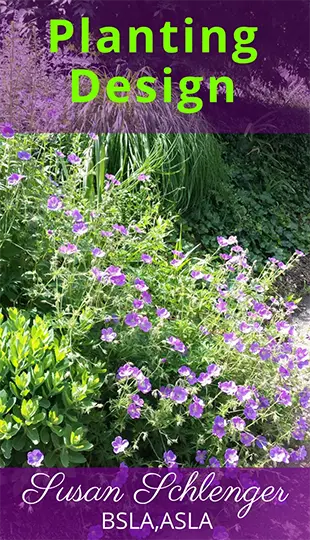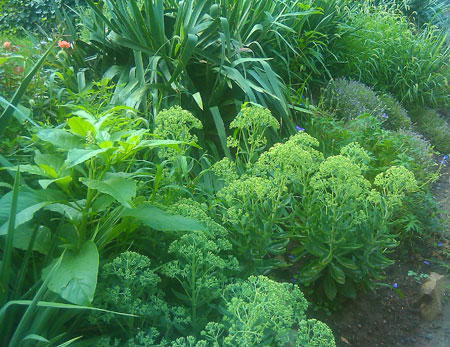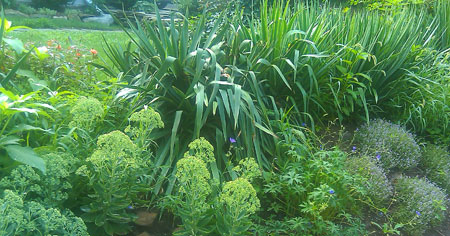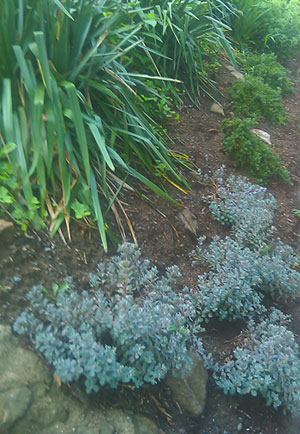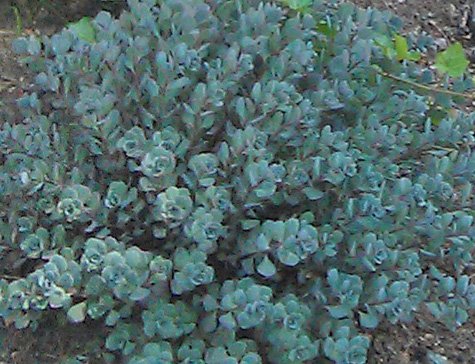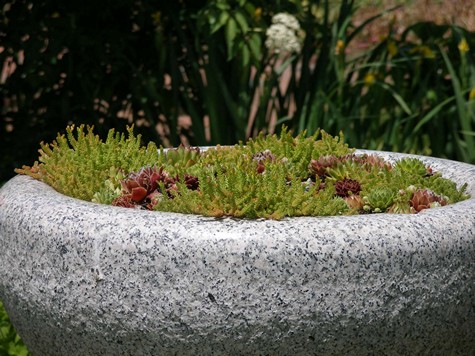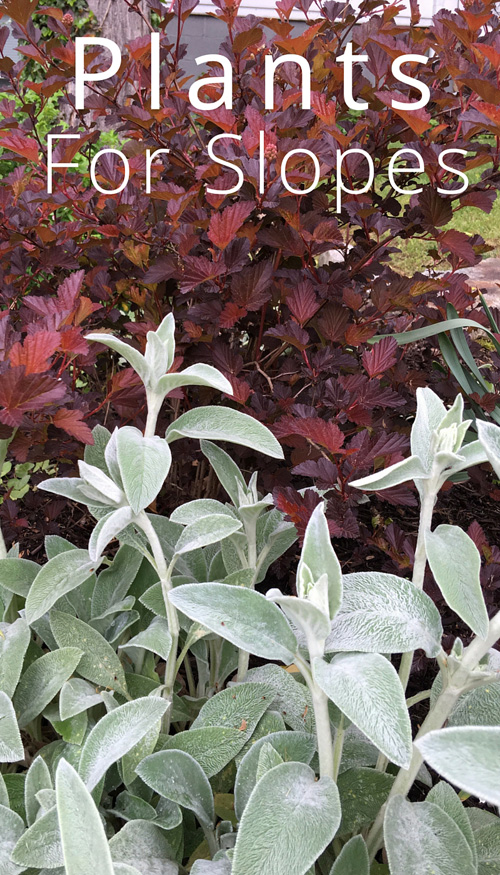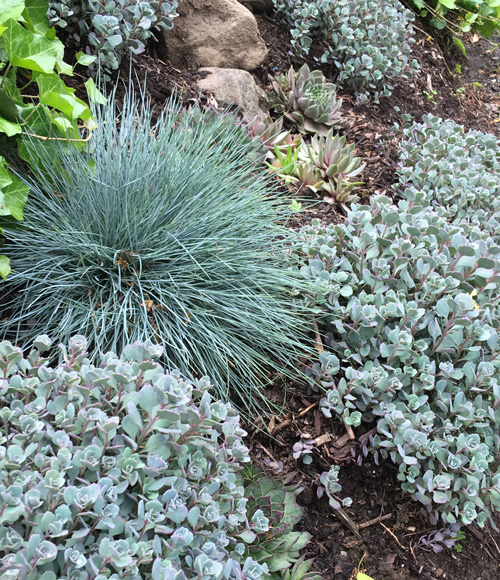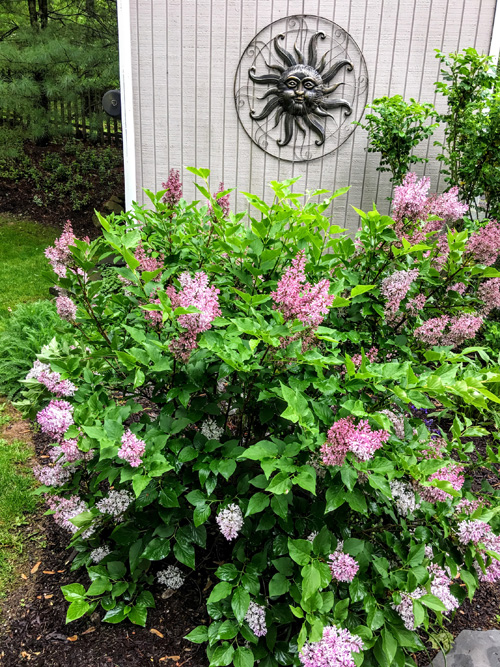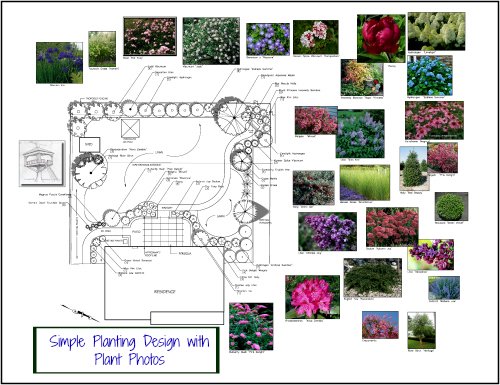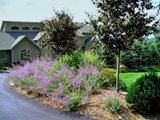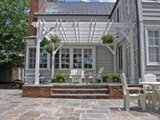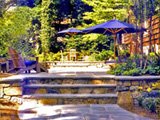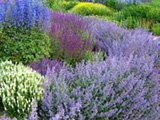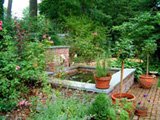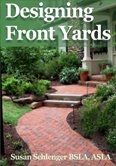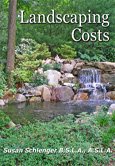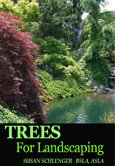Xeriscape Plants
Choose For Color, Texture, Height, and Interest
There are various reasons you might want to use xeriscape plantsin your landscape design, whether you are landscaping a hill, want to have "green" landscaping to conserve water, or just make life easier!
These drought tolerant plants live on a lot less water, and some actually prefer it that way. I've seen a few varieties of xeriscape perennials that suffer in wet situations.
For my personal situation, I had to do some serious xeriscape landscaping on a hill. We all know how the shoemaker's children have no shoes...well, I wasn't go to be like that...a landscape designer with no landscaping. However, this was tough!
A steep slope makes landscaping challenging.
- It was a slope right at the road.
- It was steep.
- It was pretty much hot and sunny most of the day.
- It was also a fair distance from the house.
There were existing Yucca plants at the top of the slope.
Because of the steepness, this meant that water will not have a chance to be absorbed by the plants as if they were on flat ground.
The water wants to roll down the hill, which means the plants will get less water at one watering time. One thing that helps is to water a little more frequently, but with lesser amounts. Yet, remember, this area was not close to my house. I didn't want to be a slave to watering.
The
steepness also meant that certain xeriscape plants would look better
and do better than others. Plants that grow horizontally would be a good
choice and also those that are not too tall.
More Help
Xeriscaping
I used xeriscape plants varying in textures in the design.
The sunny conditions limited my plant selection further, but was a good situation for xeriscape landscaping with drought tolerant plants. I needed to use plants that like the sun, but also those that would survive without a lot of water.
Believe it or not, I changed my concept and xeriscape design quite a few times before I was able to decide on drought resistant plants. To make things easy, I decided to go with Junipers and Bearberry. You might be familiar with Junipers, but Bearberry (Arctostaphylos uva-ursi) is much less common. Here is the information for it.
Bearberry (Arctostaphylos uva-ursi)
- Type - Groundcover, woody plant, evergreen
- Hardy range (plant zone) - 2B to 6B
- Height - 12" to 24" / 30cm to 60cm
- Spread - 5' to 10' / 1.60m to 3.00m
- Growth rate -Slow
- Form - Prostrate and spreading or horizontal
- Exposure - Partial shade or partial sun to full sun
I loved that it was evergreen. This evergreen groundcover also likes dry conditions. So I was good to go! I called around and finally found one nursery that had them.
However, when I got there, that was not the story. They had none...not one. At this point I was determined to not leave empty handed, so I had to improvise and select some other plants that:
- Liked the sun.
- Did well in dry conditions.
- Had a somewhat horizontal growth habit and were not too tall.
- Evergreen was a plus. See Evergreen Shrubs
- Spreading was another plus.
Yuccas existed from previous owner...well, at least they are evergreen! Roses on top of slope are one of the easy to grow roses.
For the first time, I used blue foliage plants..not usually my thing, but have come to love these striking small Sedums. Shore Juniper next to them create a nice contrast.
Sedum 'Cauticola' - very drought tolerant and excellent to use for xeriscaping or if you just want to add some low maintenance plants.
And with all that, designer that I am, I wanted to vary textures,
colors, heights of these drought resistant plants and have some flowers
if possible in this xeriscape design. (I know, my previous plan did not
call for flowers, but now that things were changing, I wanted flowers!)
So here is what I bought and planted.
- (3) Shore Juniper - a good evergreen xeriscape plants
- (3) Catmint 'Walker's Low' - great pale purple flowers
- (3) Ajuga - placed in a small area of part sun/part shade
- (5) Sedum 'Cauticola' - low variety with a tinge of blue (stands out)
- (5) Thyme - easy maintenance drought tolerant plant
- (3) Sedum 'Autumn Joy'- one of the best xeriscape plants
- (5) Sedum - low variety with a reddish cast
- (1) Geranium 'Johnson's Blue' - blue flowers
As an aside, at the top of the slope, behind the Yuccas there is an additional small planting area. Here, I could do as I please with the landscape plants. I did not have to pay attention to xeriscaping...except that it still advantageous to not have to water as much. This area is still a work in progress. So far, I have used a taller version of Catmint, Carefree Celebration Rose (a newer hardy shrub rose) and some Lamb's Ears.
Take a look at some pictures of these great perennial flowers.
The one thing I am going to change on the slope plantings are the Ajuga and the reddish colored Sedum. They don't show up enough and fade away. Now, I'll see how these xeriscape plants do!
Update - 2nd year
All the plants did great except for the Juniper. I pulled out the Juniper and replaced them with additional Sedum and Thyme...the slope looks lush and full. And best of all, there is just about no watering or maintenance necessary!
Also see plants for landscaping for an overview of plant types and varieties.
Consider using succulents in a planter almost anywhere.
These two plants are also on my slope and I love them both. The fuzzy grayish one is Lambs Ear. The plant with the copper leaves is Coppertina Ninebark. Both are great choices. The Lambs Ear will be come a semi ground cover.
Blue perennials can add a nice change to all the greens. These lovely plants...yes, you guessed it...drought tolerant! Sedum cauticola, Blue Fescue grass and some hens and chicks all add different sized leaves, shapes, textures and fun.
There are lots of plants that will do just fine without a lot of water. This one, Miss Kim Lilac, is in my backyard and is happy with very little care.
If you enjoyed this page, please share it!
Return From Xeriscape Plants to Plants For Landscaping
Landscape Design Advice Home
